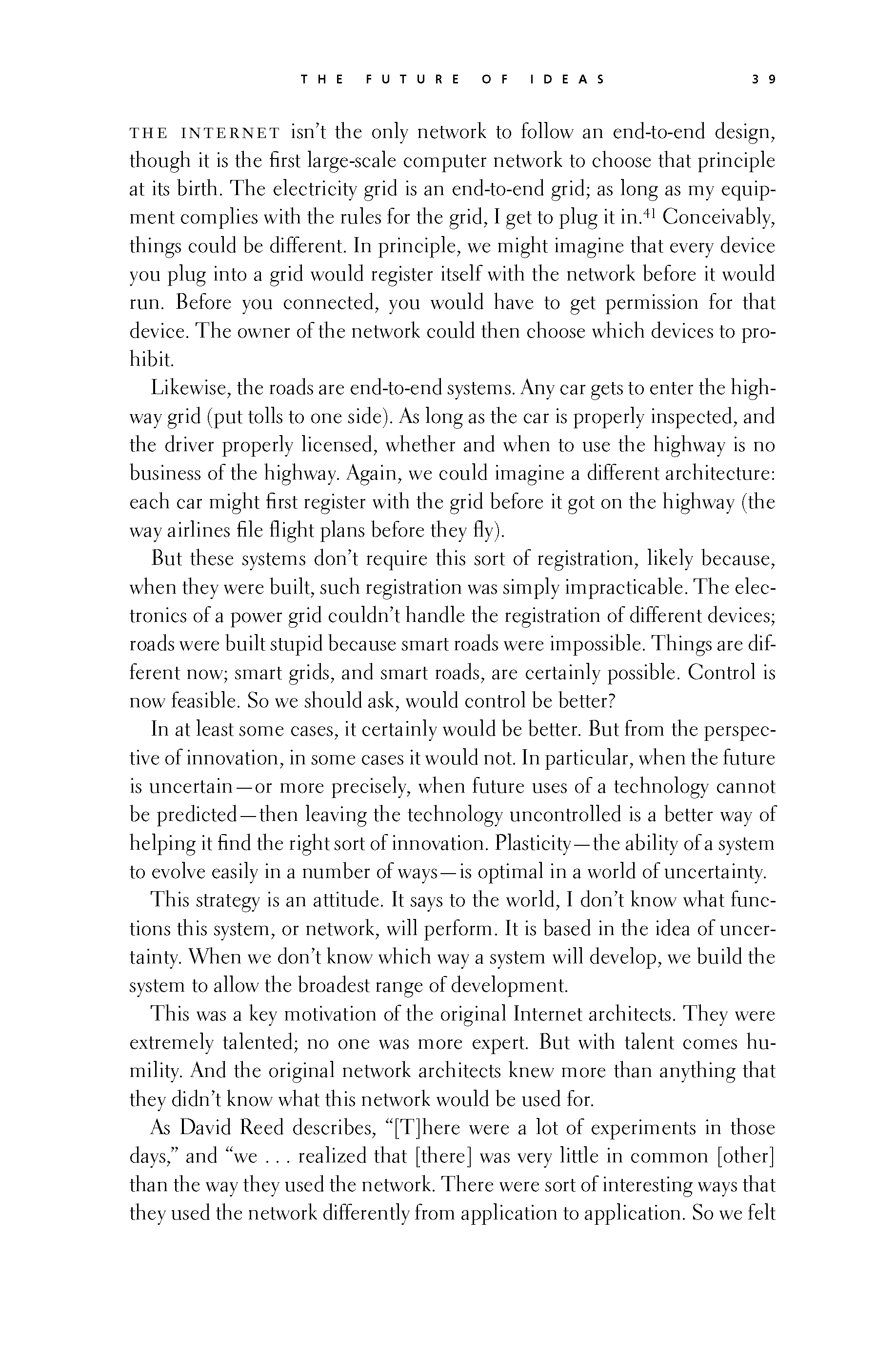 p038 _
-chap- _
toc-1 _
p039w _
toc-2 _
+chap+ _
p040
p038 _
-chap- _
toc-1 _
p039w _
toc-2 _
+chap+ _
p040
///\\\
The internet isn't the only network to follow an end-to-end design,
though it is the first large-scale computer network to choose that principle
at its birth. The electricity grid is an end-to-end grid; as long as my equip-
ment complies with the rules for the grid, I get to plug it in.[3-41] Conceivably,
things could be different. In principle, we might imagine that every device
you plug into a grid would register itself with the network before it would
run. Before you connected, you would have to get permission for that
device. The owner of the network could then choose which devices to pro-
hibit.
Likewise, the roads are end-to-end systems. Any car gets to enter the high-
way grid (put tolls to one side). As long as the car is properly inspected, and
the driver properly licensed, whether and when to use the highway is no
business of the highway. Again, we could imagine a different architecture:
each car might first register with the grid before it got on the highway (the
way airlines file flight plans before they fly).
But these systems don't require this sort of registration, likely because,
when they were built, such registration was simply impracticable. The elec-
tronics of a power grid couldn't handle the registration of different devices;
roads were built stupid because smart roads were impossible. Things are dif-
ferent now; smart grids, and smart roads, are certainly possible. Control is
now feasible. So we should ask, would control be better?
In at least some cases, it certainly would be better. But from the perspec-
tive of innovation, in some cases it would not. In particular, when the future
is uncertain -- or more precisely, when future uses of a technology cannot
be predicted -- then leaving the technology uncontrolled is a better way of
helping it find the right sort of innovation. Plasticity -- the ability of a system
to evolve easily in a number of ways -- is optimal in a world of uncertainty.
This strategy is an attitude. It says to the world, I don't know what func-
tions this system, or network, will perform. It is based in the idea of uncer-
tainty. When we don't know which way a system will develop, we build the
system to allow the broadest range of development.
This was a key motivation of the original Internet architects. They were
extremely talented; no one was more expert. But with talent comes hu-
mility. And the original network architects knew more than anything that
they didn't know what this network would be used for.
As David Reed describes, "[T]here were a lot of experiments in those
days," and "we... realized that [there] was very little in common [other]
than the way they used the network. There were sort of interesting ways that
they used the network differently from application to application. So we felt
[[39]]
p038 _
-chap- _
toc-1 _
p039w _
toc-2 _
+chap+ _
p040